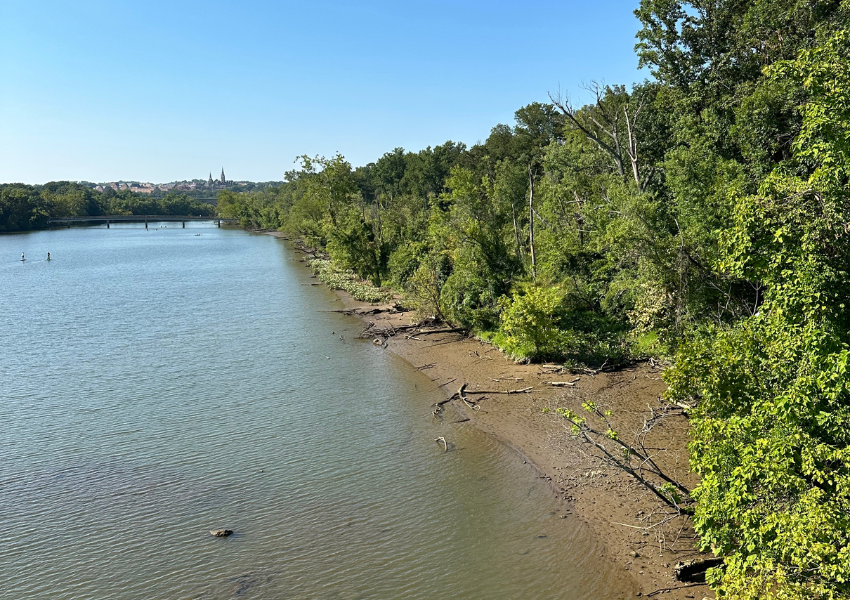Oh no, ticks are proving their winter survival skills – discover their secrets
/Here’s how an increase in pollution is leading to a concerning uptick of this harmful insect population
Winter is here, but that doesn’t mean you can let your guard down when it comes to ticks!
The heating climate harms many local animals, but a tick ain’t one. And that’s bad news for lovers of the outdoors, who are having trouble avoiding them even in winter months.
And now that tick populations are not dying off at usual rates during winter, the risk of contracting lyme disease is higher than ever.
The abundance of deer ticks is concerning because they are the main transmitters of Lyme disease, a vector-borne illness that can cause fever, rashes, headaches, and fatigue as well as other symptoms, if untreated.
So what’s going on exactly? Let’s take a closer look at how the climate crisis is actually the culprit of this concerning uptick.
More ticks, more problems
Normally, about 20% of tick populations die off each winter, either from freezing to death or from large, seasonal temperature swings. However, as our Potomac River Climate Series confirms, our region is experiencing longer warm seasons and hotter temperatures – conditions that allow more ticks to survive mild winter months.
More ticks mean an increased risk of transmitting Lyme disease.
According to a recent study, under a warming scenario of 3.6° F, the number of Lyme disease cases in the U.S. will increase by 20%. (To put that into perspective, the goal of the Paris Agreement is to keep global warming from going over 3.6%.)
In the span of 1901 to 2014, average temperatures for each state in the Potomac River region have risen by 1.15% (West Virginia), 1.5% (Maryland and Virginia), and 2.2% (Pennsylvania and Washington, DC).
What used to be chilly, snowy days are now more likely to be mild and rainy—and this is a tick’s dream weather. They thrive in warm, moist places. Consistent temperatures of 70-90° F support tick reproduction and can lead to an increase in population size.
To make matters worse, one of our natural defenses against ticks is being weakened by urban sprawl. Forested land has become sparser, so tick-carrying animals, like the white-footed mouse, have been forced to move closer to our own backyards.
And Lyme disease isn’t the only vector-borne illness that may be on the rise. Mosquitoes can carry harmful viruses like Zika and West Nile.
Studies are showing that bug bite season in DC is lasting 37 days longer than it did about 40 years ago, increasing the chance to contract a virus.
How we can kick ticks to the curb
Not all hope is lost, though! We can keep ticks and tick-carrying animals at bay by protecting forests.
When trees are plentiful, these creatures are more apt to stay in their home instead of coming into ours. Healthy forests also protect local wildlife and mitigate the effects of climate change by providing shelter, filtering out pollutants, and increasing shaded areas to keep local temperatures down. We can help our region’s forests by speaking up for forest protection laws, volunteering to remove tree-choking English ivy, and supporting area land trusts that conserve family-owned forests.
As an accredited land trust, Potomac Conservancy works one-on-one with families and small farms to place permanent protections on riverside forests. Conserving family forests ensures that we’re safeguarding natural areas that provide clean water, healthy air, and thriving habitat. Not to mention, keeping those pesky ticks in their proper homes year-round.
Of course, a forest is only as healthy as the streams and rivers that run through it.
Ensuring the proper flow of rivers and draining rainwater can also decrease the number of mosquitoes that flock and reproduce by stagnant water, making the outdoors a safer and more enjoyable place in the summer months. Many cities and counties in our region subsidize rain gardens or give away free rain barrels, an easy garden tool that captures rainwater to prevent it from pooling or contributing to polluted runoff.
Of course, clean water allows trees, plants, and animals to flourish, and in turn, helps protect communities from the effects of climate change.
Want even more ways to be an advocate for healthy forests and clean water? Learn how you can talk about the climate crisis and be part of a real change in your community.















